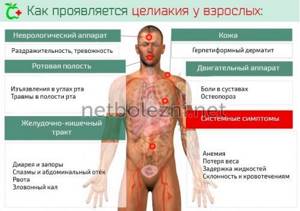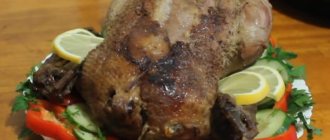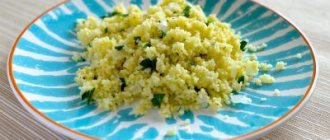What are papillomas and warts
These are small growths with a rough skin texture caused by the human papillomavirus (HPV).
Appearance depends on their location on the body and the thickness of the skin. They can grow in groups or singly and have a rough surface. Sometimes a black spot is visible in the middle. They are usually not dangerous. But they are extremely unpleasant in appearance and can be painful if located in areas of friction or pressure. Warts are more likely to occur in people with weakened immune systems. Regular ones appear on the hands, and flat ones appear on the face. Warts on the soles of the feet are called plantar warts. They can also be painful. When the fingernails and toenails are affected, they are called subungual and periungual warts.
Another place where they appear is in the intimate areas. They can develop on the genitals, near the anus, and also on the inner thighs. Before treating papillomas with home remedies, be sure to consult your doctor. There have been no special studies on the effectiveness of these products, and if used incorrectly, they may well be unsafe. However, their incorrect use can be unsafe (traumatization of papillomas can lead to their malignant degeneration). In addition, all formations of this kind must be checked for cancer potential.
Etiology and pathogenesis
According to statistics from the World Health Association, Guy-Herter-Heubner disease (intolerance to intestinal infantilism) occurs in 10% of the total population. Moreover, in some cases, the disease proceeds in a latent form for a long period. Predisposition to the disease occurs at the genetic level - if parents are sick, then children have a risk of developing intolerance. The pathology develops from early childhood, from the moment complementary foods are introduced, when porridge is included in the infant’s diet.
In addition to genetic predisposition, symptoms of intolerance can be triggered by other factors such as:
- congenital anomalies in the development of the small intestine (narrowing of the lumen, lack of peristalsis);
- exacerbation in the postoperative period (surgeries on the gastrointestinal tract);
- “harmful” lifestyle (non-compliance with diet, alcohol consumption, stress);
- weakening of the body's protective functions;
- autoimmune pathologies (dermatitis, thrombosis, hepatitis, diabetes, hemolytic anemia);
- infectious intestinal diseases (staphylococcus, salmonellosis, typhoid fever, fungus).
How to remove papillomas with castor oil
This substance has an antiviral effect, so many believe that treating papillomas with castor oil will be effective.
In addition, the oil also has anti-inflammatory properties and is rich in antioxidants, it moisturizes and soothes irritated skin. The method of using castor oil for papillomas is simple: rub the affected area with cold-pressed oil for several minutes and leave on the surface.
Apply two or three times daily. It may take a few weeks to a month to be effective, but you can certainly get rid of them.
Disease detection
A reaction to foods containing gluten protein can occur either immediately or delayed. But the most interesting thing about the course of the disease is that the symptoms of the disease may differ for each patient, so an accurate diagnosis of the disease is important.
Gluten can be found not only in food - it can often be found in decorative cosmetics, creams and hair masks.
Diagnosis of the disease is based on characteristic symptoms - intestinal disorders. The doctor makes the final diagnosis based on laboratory tests such as biochemical blood tests, urine tests, and stool tests.

A histological examination of the intestinal mucosa is also carried out. This analysis determines the presence of atrophied villi and a large number of lymphocytes, which characterizes the presence of an inflammatory process. A gluten-sensitive gut test is performed. To determine the general condition of the body, the patient may be prescribed a number of other studies:
- X-ray
examination of the abdominal organs; - ultrasound
examination of the digestive organs; - computed
tomography of the peritoneum; - Magnetic resonance
imaging of the abdominal cavity.
Apple vinegar
This remedy has antiviral, antibacterial and antifungal properties.
The organic acid in apple cider vinegar destroys tissue. Soak cotton wool in vinegar and apply it to the wart. Use an adhesive bandage to hold it in place. Discard the cotton the next morning, leaving it overnight. Repeat this simple remedy for several weeks. After a few days they will begin to turn black and very soon fall off, leaving a small mark that will gradually disappear.
Tea tree oil

It is easily absorbed by the skin and kills the virus. Dilute the essential oil with water (a few drops with 2 tablespoons of water) and apply to the affected area. Let it dry. To see results, use it 5-6 times during the day and before bed for several weeks.
How to determine intestinal infantilism
Symptoms in adults are manifested by complications arising from a deficiency of nutrients in the human body. As a result of gluten stagnation in the intestines and digestive disorders, patients develop diseases such as arthritis, osteoporosis, stomatitis, caries, and glossitis of the tongue. Pathology leads to circulatory disorders, migraines and disorders of the central nervous system. Fatigue increases, a person constantly feels tired and unwell. Depression develops, disturbances in the functioning of the endocrine system appear and, as a result, infertility occurs.

Celiac disease and an allergic reaction to gluten protein are different in their manifestations and mechanism of occurrence of the disease. The main manifestations of gluten intolerance are similar to an allergic reaction to gluten - the similarities and differences can be seen in the table:
| Intolerance in adults | Allergic reaction |
| Abdominal colic, vomiting, foul-smelling diarrhea, sudden weight loss. | Flatulence, colic, nausea. |
| Joint pain, numbness in limbs, brittle bones. | Decreased tone, fatigue |
| Dermatitis – itching, watery blisters | Headaches, dizziness |
| Irregular menstrual cycle, infertility | Skin redness |
| Muscle pain | Swelling |
Garlic
It has antiviral, antibacterial and antifungal properties that fight viral infections.
The allicin content forms strong antimicrobial activity against a wide range of bacteria, fungi, viruses and parasites. It will easily kill the virus. Peel and crush a few cloves. Rub the paste onto the affected area. You can also consume it orally. If you don't like the smell, you can take the capsules three times a day for a week. Do this daily until it is removed.
Baking soda
Due to the antiseptic and strong anti-inflammatory properties present in baking soda, it helps fight viruses.
Mix one teaspoon of white vinegar with baking soda to make a thick paste. Apply the paste twice a day, perhaps once in the morning and once at night. Dissolve baking soda in water and soak the affected arm or leg in the solution for about 30 minutes. Do not wipe your arm or leg. Instead, air dry your skin. You can also mix baking soda and castor oil to make a paste. Apply it over the top using a bandage. You can leave the paste overnight and rinse your skin with water in the morning. Repeat this remedy for several days until the formation disappears.
Thuja oil

This remedy works best for lesions that may smell or bleed, on the legs and genitals and is mainly used in homeopathic treatment. After cleaning the area, apply a drop of essential oil and cover with a bandage. Change it every day and reapply a drop of oil while changing the bandage again. Repeat every day until the formation disappears.
Vitamins (A, E and C)
Topical application of vitamin A can shrink warts without leaving scars.
Vitamin A interferes with the process of viral replication and also triggers the body's immune response. Carefully open the capsule and apply the oil to the wart. Leave to absorb. Use fish oil capsules if you can't find vitamin A capsules. Vitamin E oil is rich in antioxidants and has anti-inflammatory properties. It speeds up the natural healing process. Remove the oil from the capsule and apply. Cover with a bandage all day and remove it before going to bed. Repeat for several weeks.
The acidity of vitamin C (ascorbic acid) will help kill the virus and reduce the size until it falls off or disappears. Grind two to three vitamin C tablets and add some water to make a paste. Apply the paste and cover it with adhesive tape or tape. Use the home remedy until you see results.
How gluten intolerance develops
Pathology is provoked by wheat, rye and barley. The most toxic component of gluten is gliadin. It is she who triggers the reaction in the small intestine in predisposed individuals.
With gluten intolerance, the following changes occur in the intestines:
- Gliadin from gluten enters the small intestine and stimulates the release of zonulin, a protein that regulates tight junctions between enterocytes.
- Zonulin binds to receptors between cells and causes contraction of the cell cytoskeleton.
- Due to the contraction of cells, the holes between them open, and the intestinal wall becomes permeable to gliadin.
- Gliadin penetrates the submucosal layer and undergoes deamination, which is why it acquires antigenic properties.
- In the submucosal layer, immune cells—T-lymphocytes and B-lymphocytes—react to gliadin protein antigens. The result is activation of autoimmune inflammation in the mucous membrane of the small intestine.
An important condition for the immune response is the presence of special antigens in humans - HLA DQ2 and DQ8. It is these genes that respond to deaminated gliadin peptides and transmit information about the foreign protein to T lymphocytes.
If a person with genetic intolerance eats even small amounts of food containing gluten, he will face numerous diseases. Those. The ban is complete and it cannot be cured!
With 100% failure, the mucous membrane recovers in about six months. The process can be accelerated by using natural anti-inflammatory omega-3 acids and by normalizing the intestinal microflora.
But there is good news - there are much fewer such people than gluten-free food manufacturers try to imagine.
Could there be another form of gluten sensitivity where you definitely feel it is worse, but it is treatable?











